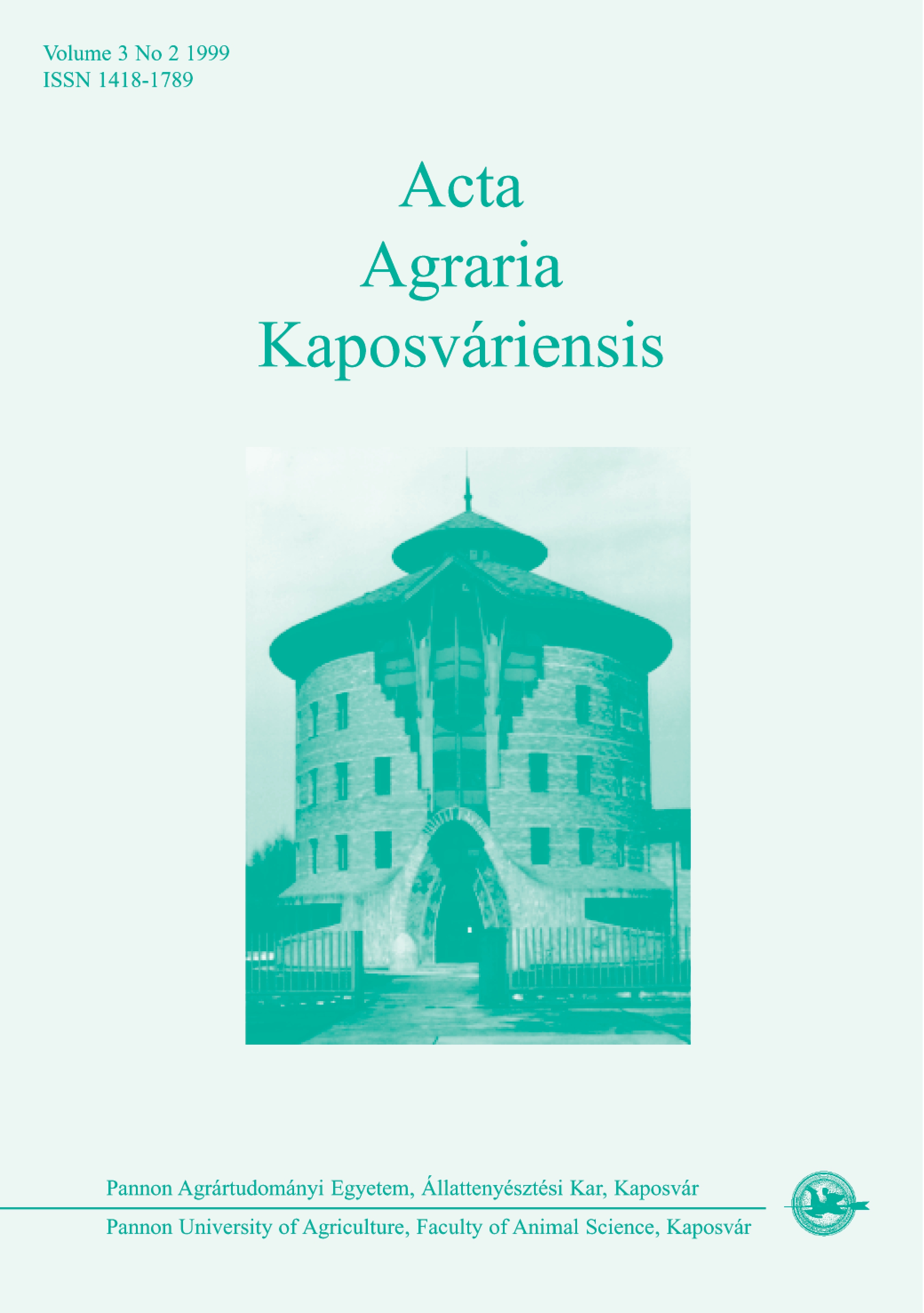Work organisation in the production of slaughter pigs on Hungarian and Japanese pig farms
Kulcsszavak:
pig production, work organisation, work efficiency, Hungary, JapanAbsztrakt
The production of slaughter pigs is a particularly important branch of Hungarian agriculture. Indication of this can be observed in the fact that pig meat accounts for 20–22% of all agricultural exports from the country. In the past 25 years particularly specific changes have taken place in the production of slaughter pigs in Hungary; these manifest themselves extensively in the respective variations of keeping technology, mainly in procedures related to animal feeding and nutrition. The authors provide a detailed account of the investigations performed on various farms for the purpose of exploring solutions and variations for work organisation to be considered optimal from the economic aspect. In the course of these investigations the role of the various factors influencing quality was applied as an important aspect, as was the unearthing of experience and observations related to the introduction into use in Hungary of the EUROP meat classification system. Japanese pig farming was also studied from the aspect of work organisation. Special emphasis was laid on the production of slaughter pigs and work organisation solutions. A comparison was made between Japanese and Hungarian pig farms with a case study on four Hungarian, one American and four Japanese farms.
Hivatkozások
Fejes, J., Schweigert, A. (1992). Magyar és angol sertéstelepek munkatermelékenységi elemzése. III. Agrárökonómiai Napok. Gyöngyös, 273–276.
Japanese Ministry of Agriculture (1995). Forestry and Fisheries (MAFF). Results of the 1995 Census of Agriculture.
Kalm, E. (1994). Situation and prospects of pig production in Europe. International Pig Breeding Conference. Debrecen University of Agriculture, 283–288.
Local farmers daily newspaper (1999). Gumma prefecture, Japan, 5th February.
Nippon a charted survey of Japan (1994). Published by Kokusei-sha Corporation, Tokyo.
Széles, Gy. (1998). A sertéságazat szervezése és ökonómiája. 461–485. In Magda S.: A mezőgazdasági vállalkozások szervezése és ökonómiája. Mezőgazdasági Szaktudás Kiadó, Budapest.
Letöltések
Megjelent
Folyóirat szám
Rovat
License
Copyright (c) 1999 János Fejes, Csaba Sarudi, Gyula Széles

This work is licensed under a Creative Commons Attribution-NonCommercial-NoDerivatives 4.0 International License.






